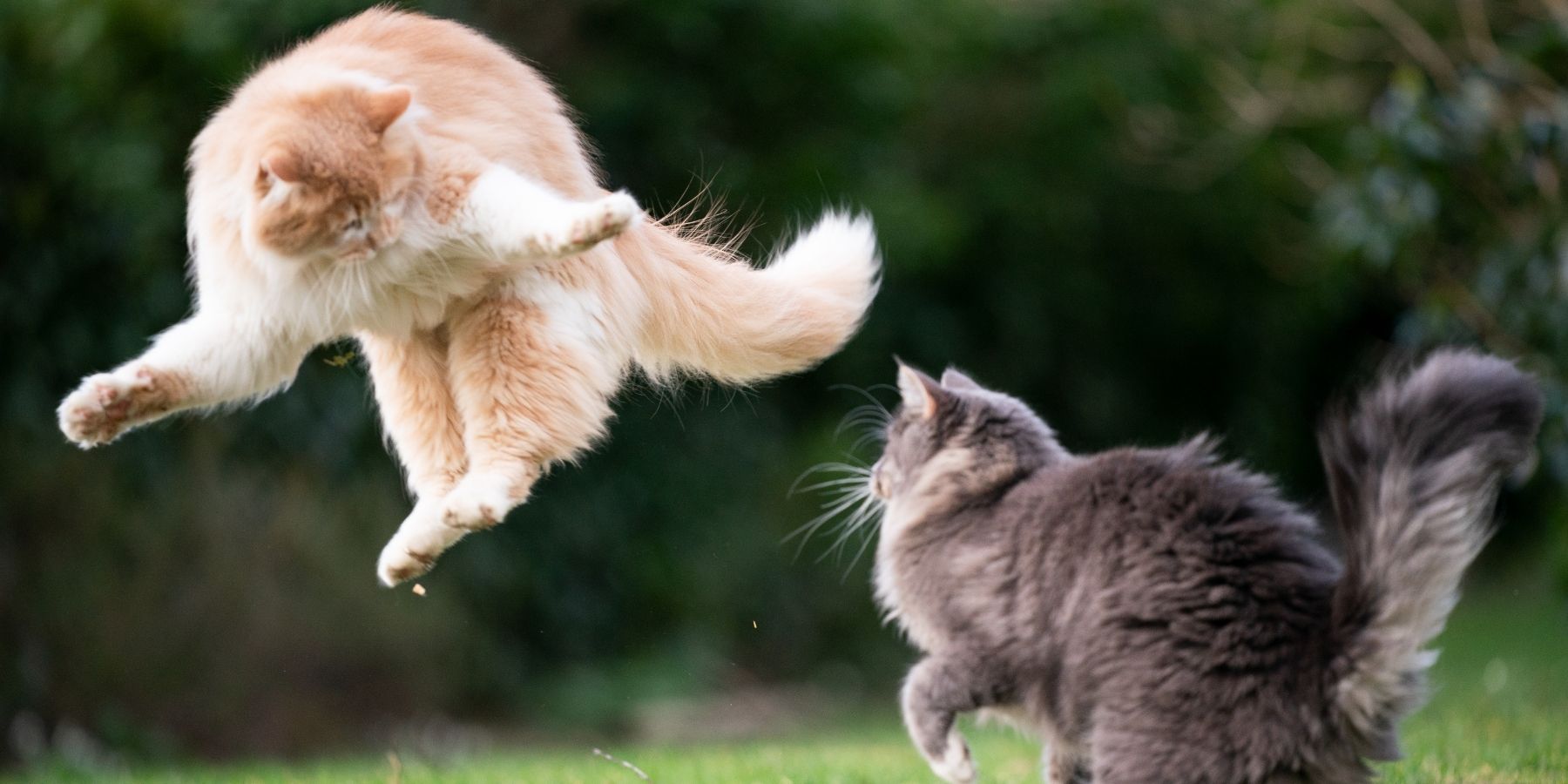As cat owners, we often see our furry friends tussle and wonder: is this a fight or play? Knowing the difference is key to ensuring their well-being. Let's dive into how you can tell the difference.
1. Understanding Playful Behavior
Cats play for fun and exercise. Play is usually quiet and calm. Look for these signs:
Soft paws: When cats play, they keep their claws retracted.
Gentle bites: Playful bites are soft and don't cause harm.
Taking turns: In the play, cats switch roles, chasing and being chased.
2. Recognizing Signs of Aggression
Aggressive encounters are different. They can lead to stress and injury. Watch for:
Loud noises: Hissing, growling, or yowling are signs of a real fight.
Visible claws: Cats show claws when they mean business.
Stiff body language: Ears flat, fur puffed up, and tails swishing rapidly.
3. Encouraging Harmonious Play
You can help your cats get along. Here’s how:
Proper introductions: When bringing a new cat home, introduce them slowly.
Separate resources: Give each cat their own food bowl, bed, and litter box.
Playtime: Regular play sessions reduce tension and encourage bonding.
4. When to Intervene
Sometimes you need to step in. If you notice:
Continued aggression: Repeated fights, not just occasional spats.
Injuries: Any sign of injury means it’s time to separate them.
Stress signs: If one cat avoids the other or hides, intervene.
5. Avoiding Common Mistakes
Don’t punish: Punishing cats can increase stress and aggression.
No forced interaction: Let them establish their own relationship.
6. Seeking Professional Help
If problems continue, consult a vet or animal behaviorist. They can provide tailored advice.
Summary
This guide helps you tell if your cats are fighting or playing. Look for soft paws and gentle bites in play, versus loud noises and visible claws in fights. Encourage harmonious play and know when to intervene. Avoid punishing and forcing interaction. If problems persist, seek professional advice.
FAQs
Q: How can I tell if my cats are playing or fighting?
A: Look for signs like soft paws and gentle bites for play, and loud noises and visible claws for fights.
Q: What should I do if my cats are fighting?
A: Separate them gently, provide individual resources, and consult a vet if it continues.
Q: Can I prevent my cats from fighting?
A: Yes, by introducing them properly, providing individual resources, and regular playtime.
Q: Is it normal for cats to play rough?
A: Yes, some cats play rough, but it shouldn’t involve loud noises or visible claws.
Q: Should I punish my cats for fighting?
A: No, punishment can increase stress. Instead, try to understand and address the root cause.


